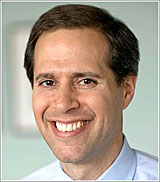Health Care Access & Coverage
Blog Post
Economic and Policy Insights on the American Health Care Act
Four quick takes
After the House passed the American Health Care Act (AHCA), I asked a few of our Senior Fellows to comment on the economic problems the AHCA is designed to fix, and the economic problems it might cause, all politics aside. Dan Polsky immediately pushed back on the premise of ‘politics aside’:
This is more of a political bill than a health care policy bill, so it’s hard to evaluate the bill entirely based on economics. The bill is largely a transfer to high-income individuals who will receive a 1 trillion dollar tax cut and this will be paid by sick and poor individuals who previously were receiving assistance through Medicaid. One’s feelings about the bill depend largely on whether one views this transfer as a good thing or a bad thing. I will try to focus on some economic questions, but one should not lose sight of the transfers induced by this bill.
Politics are never really aside, especially now, as the bill moves into the Senate. That being said, our Senior Fellows graciously agreed to comment on the AHCA’s economic and health policy implications.

Scott Harrington, PhD, explained what the bill was trying to accomplish, and how:
The bill seeks to address low coverage take up, older and sicker risk pools, and declining insurer participation in many states in order to promote broader and more sustainable individual health insurance markets. The main mechanisms are: (1) allow greater flexibility in coverage design, (2) allow state flexibility to reduce the impact of high-cost enrollees on premium rates through reinsurance and/or visible or “invisible” high risk pools with substantial federal funding, and (3) helping to equalize the tax treatment of individual coverage and employer coverage through age-adjusted refundable tax credits. The bill includes substantial federal funding—with phased in state matching—for alternative state approaches to stabilize markets, provide additional assistance to lower income buyers, including reduced cost sharing. The bill also seeks to improve states’ incentives and increase state flexibility over Medicaid while helping to control projected long-run spending at the federal level.

Dan Polsky, PhD, focused on core issues of costs and affordability:
Economists might say that changing Medicaid from a federal match to a per capita formula addresses an efficiency problem with the Medicaid program by giving states full financial responsibility for their choices managing their Medicaid program, but it also creates incentives for states to just do less rather than provide services more efficiently.
The bill is also directed at the individual market. The ACA used community rating, which creates a risk pool with healthy and sick members who pay similar premium rates. This creates a mechanism for sharing the costs of the sick members of the pool among the healthier members, but it means that there are healthier members of the pool who are paying more in premiums than they would reasonably expect to get back in value from the plan they are purchasing. While this problem was cushioned by tax subsidies, the AHCA addresses this problem in 3 ways: it has broader variation in premium differences between young and old, it establishes a modest fund to create risk pools, and it replaces subsidies tied to affordability with a flat tax credit. These policies, however, along with the move away from the individual mandate, will lower the amount paid for insurance for a very narrow segment of those who would have to rely on the individual market for insurance. So by addressing this economic problem, the bill creates a host of other economic problems. Insurance becomes even less affordable for the old, sick, and low-income.
The largest economic problem in health care is that it has become unaffordable; the rate of unaffordability continues to rise with increasing health care costs. The bill does nothing to address rising health care costs and dramatically scales back assistance to address the problem of affordability.

Mark Pauly, PhD, answered as only Mark Pauly can:
I would not claim with any certainty that we know for sure what problems the bill will fix or cause.
I do know about the intentions of the sponsors and the fears of the opponents. It is intended to solve 3 economic problems: the rising premiums in many exchange markets for people of average or low risk; 2) the open-ended nature of expanded Medicaid and possible future claims on state spending; 3) the anticipated collapse in many states of exchanges as insurers (except for Blue Cross if it is still nonprofit) pull out. The feared problems are 1) the high risk pools intended to skim off the high risks and allow regular exchange premiums for regular risks may not be adequately funded (whatever that means); 2) some states may choose to be beastly to their poor able-bodied citizens and provide Medicaid with even less access to care and make them work; 3) ACA was going just great and even though the exchanges only cover 3% of the population some states will drop it if they can rather than cherish it as they should.

David Rubin, MD, MSCE, focused on the ‘hidden cost’ to our nation’s children:
The House’s passage of the AHCA revealed the strong appetite in Congress to reduce the federal government’s share of health care spending, even at the expense of increasing uninsurance nationwide. Much will be written in the coming days about who could be most harmed by these cuts. Commentaries will highlight the newly insured participants on the exchanges or those adults who were recently insured through state Medicaid expansions. But the hidden story here is the tremendous vulnerability for children’s health care coverage.
More than 40 percent of children in this country are covered by Medicaid, a number that has been dramatically climbing in recent years as employer-sponsored dependent coverage has become unaffordable or unavailable for many low-income working families. Many people don’t realize that children make up 50 percent of Medicaid enrollees, but only account for 20 percent of the program’s spending. A major reduction in Medicaid spending would disproportionately reduce services to children, as cutting services to children is far easier—and invisible—than reducing nursing care services for the elderly.
Already we have seen that when states are stretched financially, there are cutbacks to services for families, particularly state funding for schools. If the AHCA becomes law, states’ financial burdens will only grow, not only threatening access to adequate health coverage for children and adolescents, but other services that impact their development into healthy adults.
If one traces the origin of the Medicaid program, he or she will find that the poor general health of military recruits inspired its creation. Medicaid’s passage, through the 1965 Social Security Act, signaled a commitment to ensure equal opportunity for our nation’s children. Today, we have come full circle: the military is again rejecting most of its recruits as unqualified for service, either because of health issues, obesity, criminal histories or failure to complete high school. The AHCA’s downstream effects would exacerbate these trends, leaving new generations of children facing the same or worse risks than were present in the 1960s.